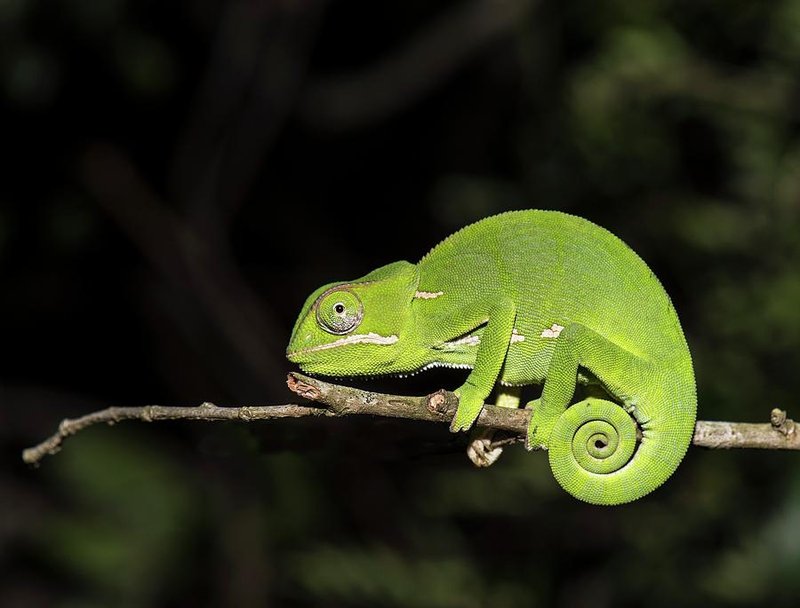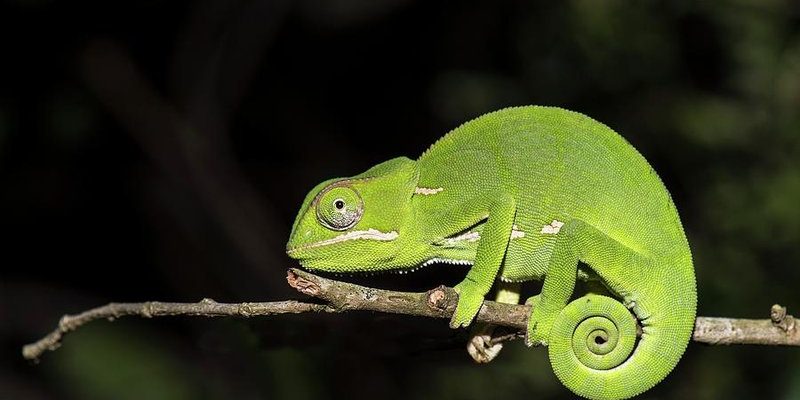
Identifying a flap-necked chameleon isn’t just about spotting a lizard; it’s like a treasure hunt in the wild. Picture yourself in a lush, green forest, surrounded by the sounds of nature. As you look around, you’re on the lookout for a unique lizard that can not only change shades but also sport a noticeable flap around its neck. Knowing what to look for can make this hunt much more exciting and rewarding!
What is a Flap-Necked Chameleon?
The flap-necked chameleon, or *Chamaeleo dilepis*, is a species found primarily in the forests of Africa. Known for their striking appearance, they have a distinctive flap of skin under their necks that can be extended when threatened or during mating displays. This feature isn’t just for show; it helps them communicate and ward off potential rivals or predators.
These chameleons are generally medium-sized, with males often being larger than females. They can reach lengths of about 12 to 14 inches, making them a decent size for a chameleon. Their vivid colors can range from bright greens and yellows to deep browns, depending on their mood, health, and environmental factors.
You might be wondering why these chameleons have such impressive color-changing abilities. Well, it’s not just about camouflage; it’s also a way to express emotions and reactions to their environment. So, keep your eyes peeled for these color-shifting wonders in their natural habitat!
Physical Characteristics
Identifying a flap-necked chameleon becomes easier when you know its physical traits. First, their most defining feature is the flap of skin that hangs beneath their throat. This flap can be quite pronounced, especially in males during the mating season or when they feel threatened. It’s like a fancy scarf they wear to show off!
Their skin texture also plays a significant role in identification. The scales are often rough and can reflect light in a shiny way, giving them an almost glimmering appearance in sunlight. This shiny effect can be quite stunning!
Another notable characteristic is their unique binocular vision. Chameleons can move their eyes independently, allowing them to spot prey or predators without moving their heads. If you see a lizard staring at you with both eyes seemingly looking in different directions, chances are you’re observing a chameleon!
Color Variation and Patterns
One of the coolest things about flap-necked chameleons is their ability to change color, and each hue can have a meaning. They display a variety of colors based on their environment or mood. For instance, a chameleon might be bright green when relaxed but shift to darker shades when threatened.
The patterns on their bodies are another identifying factor. Look for discrete bands or spots, which can vary between individuals. While males might show more vibrant and varied colors, females generally have more subdued tones, which help them blend into their surroundings better, especially while nesting.
You might find it fascinating how a flap-necked chameleon’s color can shift rapidly. It’s almost like watching a living canvas change before your eyes! This can be essential in the wild for both signaling to other chameleons and evading predators.
Habitat and Behavior
Flap-necked chameleons often inhabit forests and woodlands where they can climb and hide among leaves. They love to stay high up in the trees, basking in sunlight and surveying their territory. If you’re in a tropical forest, look up—this is where they usually hang out!
Behaviorally, these chameleons are both fascinating and complex. They rely heavily on their sight for hunting and social interactions. You might see them slowly moving from branch to branch, their long tongues darting out to catch insects. Their hunting style is quite strategic—using camouflage and stealth to surprise their prey.
When it comes to social behavior, males can be quite territorial, often engaging in displays or rituals to assert dominance. If you’re lucky enough to spot two males competing, you’ll see firsthand their colorful displays and throat flaring as they try to scare each other off.
Diet and Feeding
Identifying a flap-necked chameleon also involves understanding its diet. These lizards are primarily insectivorous, which means they mainly feed on insects. Crickets, moths, and grasshoppers are all part of their menu.
The hunting technique of a chameleon is unique and effective. They use their long, sticky tongues to snap up their prey from a distance. This tongue can extend to nearly twice the length of their body! Imagine trying to catch your dinner with a slingshot—it’s a bit like that!
While their diet mainly consists of insects, they also sometimes munch on soft plant materials or fruits, especially when insects are less abundant. This adaptability in their diet can be crucial for survival in varying habitats.
Common Misidentifications
When trying to identify a flap-necked chameleon, it’s easy to confuse them with other chameleon species or lizards. For example, the Jackson’s chameleon has similar features but has three distinct horns on its head.
Another common mix-up is with the panther chameleon, which also exhibits vibrant colors but is generally larger and has more varied patterns. If you see a chameleon, take a good look at its body shape, color, and size to help clarify which species you’re observing.
Learning these distinctions can really enhance your experience in the wild. Once you can spot these differences, you’ll feel like a true chameleon expert!
Why Identifying Flap-Necked Chameleons Matters
Identifying flap-necked chameleons isn’t just a fun pursuit; it’s important for conservation efforts too. These creatures play a significant role in their ecosystem as both predators and prey. Knowing more about their population and habitat can help protect them from environmental threats.
Plus, the more we know about different species, the better we can appreciate the incredible biodiversity of our planet. Engaging with wildlife can also inspire us to take action in our communities to protect natural habitats.
When you learn to identify these chameleons and understand their behavior, you’ll not only enjoy your time in nature more but also contribute to broader conservation efforts. Being informed is the first step towards making a positive change.
In conclusion, learning how to identify a flap-necked chameleon opens up a world of wonder in nature. With their unique physical traits, vibrant colors, and fascinating behaviors, they truly are remarkable creatures. So next time you’re wandering through a forest, keep your eyes peeled—you never know when you might spot one of these colorful lizards in action!

